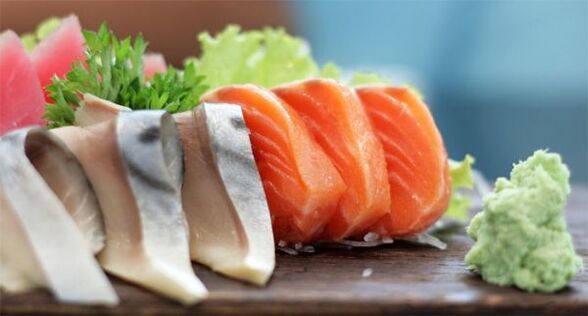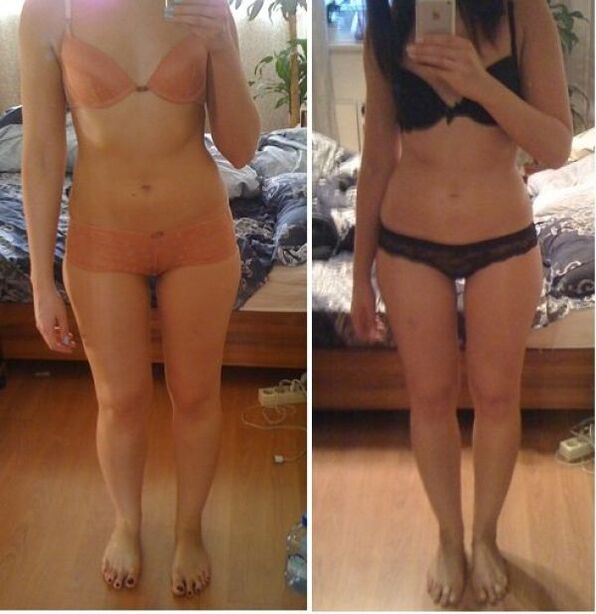Japanese method of losing weight: menu and advice
- Salt is strictly prohibited, as are all other spices;
- The menu is very strictly managed. Moreover, it not only stipulates what to eat, but also stipulates how much to eat. in grams;
- You cannot exchange a product even if you believe it is an equivalent;
- It is recommended to take a multivitamin throughout the entire diet, since due to the limited variety of foods, the body does not get enough of the necessary substances;
- It is forbidden to do strenuous exercise at the same time as eating;
- Exiting the diet is done according to strict rules. If they are ignored, the body can be put under a lot of stress, which can lead to problems.
If you follow all the rules, your stomach will shrink within two weeks and you will eat less food after stopping the diet. The main thing is to continue eating in moderation to avoid stretching again.

Contraindications
- Pregnancy and lactation. Children must have unrestricted access to necessary substances; deficiencies can lead to developmental disabilities. Therefore, wait until your baby starts feeding on his own;
- Circulatory problems: heavy load during eating;
- Digestive and endocrine diseases.
List of allowed foods
By the way, it is dangerous to leave the salt-free regime: the body is in acute salt-deficient mode, and a sharp increase in salt intake is dangerous.
- Low-sugar fresh fruits: citrus, green apple, pineapple, plum, cherry, etc. ;
- Non-starchy fresh vegetables: cabbage, carrots, zucchini, eggplant, tomatoes;
- freshly squeezed tomato juice;
- Pure virgin unrefined olive oil or sesame oil;
- Yogurt, kefir without fillers;
- cheese with very low fat but no added salt;
- The meat is very lean, skinless fillet. Beef, chicken, fish;
- Egg. By weight, 1 egg is equivalent to 5 quail eggs;
- black coffee. You can't add anything to it; it's not advisable to replace it with something soluble;
- Tea is also the simplest and most natural;
- Clean drinking water, no gas required;
- Ruks made from rye bread slices, without dried fruit.

Disable product
- Unauthorized vegetables and fruits;
- Salo;
- dairy products;
- bacon;
- baked goods, candies;
- Any store-bought beverages, especially alcoholic beverages;
- Flavoring additives.
full menu
- on Monday
- h——coffee;
- o – Cabbage salad, 2 eggs, juice from a few tomatoes;
- y – 200 grams of fish in a steamer basket.
- Tuesday
- h – coffee and 1 biscuit;
- o – steamed fish, cabbage salad;
- y – 100 g beef, kefir;
- Wednesday
- h – coffee and 1 biscuit;
- o – a few eggplants, fried in minimal oil;
- y - 200 grams of fresh beef, cabbage salad, a few eggs;
- Thursday
- h – carrot salad;
- o - 200 g steamed fish, tomatoes;
- y——sour fruit;
- Friday
- h – carrot salad;
- o - 200 g steamed fish, tomatoes;
- y - allowed fruits;
- Saturday
- h——coffee;
- o – Oven-baked chicken tenders, carrots and cabbage salad;
- y – 2 eggs, raw carrots;
- Sunday
- h——Tea;
- o - 200 g of roasted beef;
- y – Any food offered this week, of your choice, excluding fruit.
- on Monday
- h——coffee;
- o – half a kilo of freshly baked chicken tenders, cabbage and carrot salad;
- y - any food except fruit in the last week;
- Tuesday
- h – carrot salad;
- o - 200 grams of fish in the steamer, a few tomatoes;
- y——sour fruit;
- Wednesday
- h——coffee;
- o – carrot salad, eggs, cheese slices;
- y——sour fruit;
- Thursday
- h – coffee and biscuits;
- o – Grilled or raw zucchini;
- y - 200 grams of fresh beef, cabbage salad, a few eggs;
- Friday
- h——coffee;
- o - 200g steamed fish, cabbage salad;
- y – 200 g of baked beef, yogurt;
- Saturday
- h——coffee;
- o – Cabbage salad, 2 eggs, tomatoes;
- y – 200 g steamed fish;
- Sunday
- h——coffee;
- o – 200g steamed fish and cabbage salad;
- y – 200 grams of beef and a cup of kefir.
Characteristics of a salt-free diet
- Drink as much as possible. You must drink at least 2 liters of clean water in small amounts every day. If you drink 1 cup at a time, that's about 8 times close.
- It is best to drink the first glass of water in the morning before breakfast. Better yet, drink a few tablespoons of fiber with that glass of wine. This is a nutritional supplement available in any drug store. Taking it regularly can improve intestinal function and further enhance the effects of your diet.
- Don't extend your meal even if you think you can. 14 days is the maximum number of days the human body can last without sodium chloride.
- Gradual addition of salt during the last few days of the diet is allowed. You can't immediately salt food to its usual taste; the first time, it's actually about adding a few salt crystals and increasing the dosage slightly.
- If necessary, tea can be substituted for coffee. But it's best to keep things as they are - coffee can normalize blood pressure and provide the body with antioxidants.
Give up the Japanese diet
- Continue to eat according to the dietary algorithm. Strictly add new dishes to the menu, one at a time.
- Don't increase portion sizes. Your stomach will tighten slightly, enough to keep you full. If you eat too much, your stomach wall will stretch again, your stomach will grow in size, and you'll start to gain weight back.
- Be careful when adding salt. At first, just a little bit, then gradually return to your usual amount over a few days.
- It’s best not to eat other spices for at least another month. They can increase appetite and make it difficult to establish new healthy eating habits.
Comments on weight loss results
- "I soldiered on heroically and I'm very proud of myself. At the end of the first week, everything became more familiar and then it became easier. The hardest part was not having cake and chocolate for so long. Well. , I had to get used to the smaller portions. The rest wasn't terrible. You know, I just started gaining weight after a few months. "
- "I discovered this diet when I was getting ready for a wedding, but I couldn't wear a dress. I lost 10 kilograms in an emergency in two weeks; no one believed the success of this experiment until recently! At the wedding, I woreA dream dress with the perfect waist. By the way, now I have only gained a few kilos. "
- "I lost weight on 'Japanese' and I felt less heavy. Lost 7 kilos. I switched from dieting to eating healthier than before and did not gain weight. 7 years later I got pregnant and of course I had no time to careI have gained a whopping 13kg in weight from my own figure. Now I am breastfeeding my baby and should eat what is good for him. Once I stop breastfeeding, I will definitely go through these 14 days of abstinence again to get back to my previous state. I believe in this diet 100 percent. "
















































































